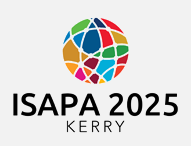Start Date
17-6-2025 9:00 AM
End Date
17-6-2025 10:30 AM
Abstract
Introduction
This project explored disability inclusion in physical activity environments in primary and intermediate schools in Aotearoa New Zealand, from the perspective of a practitioner bridging research and practice. Despite policy aspirations of inclusive physical education, sport, and play in schools, disabled children continue to experience less quality physical activity than their peers (Petrie; 2018, Sport NZ; 2018). This problem was considered through the lens of the Healthy Active Learning initiative, which aims to support schools to provide inclusive quality physical activity environments.
Methodology
A critical qualitative framework was employed for this project. This presentation draws on data generated through semi-structured interviews with members of the Healthy Active Learning workforce. 10 participants from different Healthy Active Learning teams were recruited through purposive sampling. Data were analysed using reflexive thematic analysis.
Results
A gap persists between disability inclusion policy and practice in primary and intermediate schools in Aotearoa New Zealand. This study found institutionalised ableism is prevalent in our society and therefore our physical activity environments. The emphasis on disability inclusion is inconsistent across the Healthy Active Learning workforce, teachers, and coaches in schools. Key contributors include limited professional development opportunities and differing priorities between self-governing schools and ‘locally led’ Healthy Active Learning teams.
Conclusions
These findings offer valuable insight to enhance the induction and ongoing professional development of the Healthy Active Learning workforce to strengthen disability inclusion in primary and intermediate schools across Aotearoa New Zealand. This will contribute to SDG 4 Quality Education through ensuring all children have access to quality physical activity environments in school and their communities.
Recommended Citation
Kilpatrick, Lynn, "Exploring a system of able-bodied privilege that creates and maintains barriers to disability inclusion." (2025). International Symposium of Adapted Physical Activity and International Symposium on Physical Activity and Visual Impairment and Deafblindness. 8.
https://sword.mtu.ie/isapa/2025/day2/8
Exploring a system of able-bodied privilege that creates and maintains barriers to disability inclusion.
Introduction
This project explored disability inclusion in physical activity environments in primary and intermediate schools in Aotearoa New Zealand, from the perspective of a practitioner bridging research and practice. Despite policy aspirations of inclusive physical education, sport, and play in schools, disabled children continue to experience less quality physical activity than their peers (Petrie; 2018, Sport NZ; 2018). This problem was considered through the lens of the Healthy Active Learning initiative, which aims to support schools to provide inclusive quality physical activity environments.
Methodology
A critical qualitative framework was employed for this project. This presentation draws on data generated through semi-structured interviews with members of the Healthy Active Learning workforce. 10 participants from different Healthy Active Learning teams were recruited through purposive sampling. Data were analysed using reflexive thematic analysis.
Results
A gap persists between disability inclusion policy and practice in primary and intermediate schools in Aotearoa New Zealand. This study found institutionalised ableism is prevalent in our society and therefore our physical activity environments. The emphasis on disability inclusion is inconsistent across the Healthy Active Learning workforce, teachers, and coaches in schools. Key contributors include limited professional development opportunities and differing priorities between self-governing schools and ‘locally led’ Healthy Active Learning teams.
Conclusions
These findings offer valuable insight to enhance the induction and ongoing professional development of the Healthy Active Learning workforce to strengthen disability inclusion in primary and intermediate schools across Aotearoa New Zealand. This will contribute to SDG 4 Quality Education through ensuring all children have access to quality physical activity environments in school and their communities.

